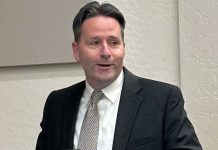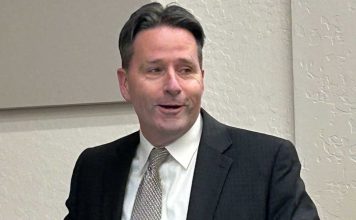GILROY
– Based on initial reviews, the revised state budget unveiled by
Gov. Gray Davis Wednesday appears to be easier on the city of
Gilroy and the County of Santa Clara than the version the governor
released in January.
GILROY – Based on initial reviews, the revised state budget unveiled by Gov. Gray Davis Wednesday appears to be easier on the city of Gilroy and the County of Santa Clara than the version the governor released in January.
However, with more conflict expected in the state Legislature before its passage, officials are cautioning that nothing is certain.
“As far as what he’s doing to us at this point in time, it’s really not where we’re looking,” said District 1 County Supervisor Don Gage on Thursday. “We’re looking for the final budget – that’s where we know a lot the services… are getting cut.”
The hike in the car tax, or Vehicle License Fee, would potentially ease one of the biggest fears of local governments.
In January, Davis proposed yanking compensatory payments the state makes to local governments to make up for a 1998 cut to the license fee during flusher times.
The move drew fire from local officials statewide.For Gilroy, Davis’ initial VLF cuts would have meant the loss of roughly $1.8 million annually of the city’s roughly $34 million general fund, its pot of discretionary money. For Santa Clara County, officials estimated it would have drained $85 million against the $1.8 billion county general fund.
Having local VLF revenues stay intact is “great” for the city, said Gilroy City Councilman Charlie Morales, who is in Sacramento with Mayor Tom Springer to lobby officials on the budget and other issues.
“As far as our city goes, which I’m very concerned about, I think it will keep us in the level of services that we’re offering (for) public safety,” Morales said of the budget.
However, city and county officials believe in the short term they could still stand to lose some money depending on how the VLF proposal would be implemented. Officials said there could be a gap next year where local governments temporarily don’t receive the revenues – which could mean a $250,000 hit for the city and potentially tens of millions for the county.
Besides that, it appears initially that “The rest of the impacts to local government, Gilroy, we can live with,” said City Administrator Jay Baksa. “Right now it’s showing some progress.”
The city of Gilroy escaped further harm because – for better or worse – it does not have a redevelopment agency. Davis wants to take over $250 million from redevelopment agencies statewide. Cities such as San Jose and Morgan Hill use to help spur economic development and urban renewal projects.Meanwhile, a Davis plan to pass on the costs of major health and welfare programs to cities and counties with little corresponding financial support has also been altered.
Instead, the governor wants to shift a smaller number of programs to local governments and support them with $1.8 billion in new money from a 23-cent-a-pack increase in cigarette taxes and a higher income tax bracket for the state’s top wage earners.
Less responsibility for new programs means less of a problem – but whether the tobacco and income tax revenues will meet expenses for those that are transferred remains to be seen, said Gary Graves, a deputy county executive who specializes in budget issues.
California smokers now pay 87 cents per pack in cigarettes taxes. That would rise to $1.10 per pack in July and to $1.50 a pack in July 2004. The higher income taxes would be paid by singles earning more than $150,000 a year and married couples who earn more than $300,000.
Davis’s proposed sales-tax hike comes at a time when officials at the county’s bus and transit agency are also considering a bid to increase the sales tax – among other potential remedies – for an unprecedented deficit.
But the governor has also restored funding he had threatened to pull from the Williamson Act, a state program that uses property tax relief to help protect agriculture and open space.
The governor called his budget a compromise that can win bipartisan support in the Legislature, although it features higher taxes that Republicans have vowed to oppose.
By financing $10.7 billion of the deficit, Davis is planning to put more money in favored programs, such as education. His new plan continues the popular $1.7 billion program to reduce the number of students in each classroom.
Proposed cuts to school spending were not as severe as educators feared, but schools will still be expected to make about $2 billion in sacrifices.
Community colleges would take a smaller hit than the governor proposed in January and will share with K-12 schools an additional $700 million. Both the University of California and the California State University have also been spared deeper cuts.
Partisan divisions formed almost immediately after Davis released his plan, and since California is one of the few states that require the budget to be passed by a two-thirds majority, those divisions could mean a tough future for Davis’ proposal.
Republican Senate leader Jim Brulte of Rancho Cucamonga said Republicans “are willing to negotiate on anything except taxes. We don’t think raising taxes is the answer.”
Assembly Speaker Herb Wesson, D-Culver City, said he supports most of Davis’ plan but said even higher taxes are necessary and that Republicans aren’t ready to compromise.
The proposal to sell bonds to pay off part of the deficit was first proposed by Brulte and Senate Republicans, although they planned to pay off the bonds by cutting state spending elsewhere.
Davis’ plan to finance the deficit is based on a model used in New York during the 1970s when that city was forced to fight off insolvency. As proposed, the state would create a separate agency to issue bonds and manage interest payments for the bonds that would be paid off over five to seven years.
Davis said the higher sales taxes would end when the bonds are paid off.
The Associated Press contributed to this report.












